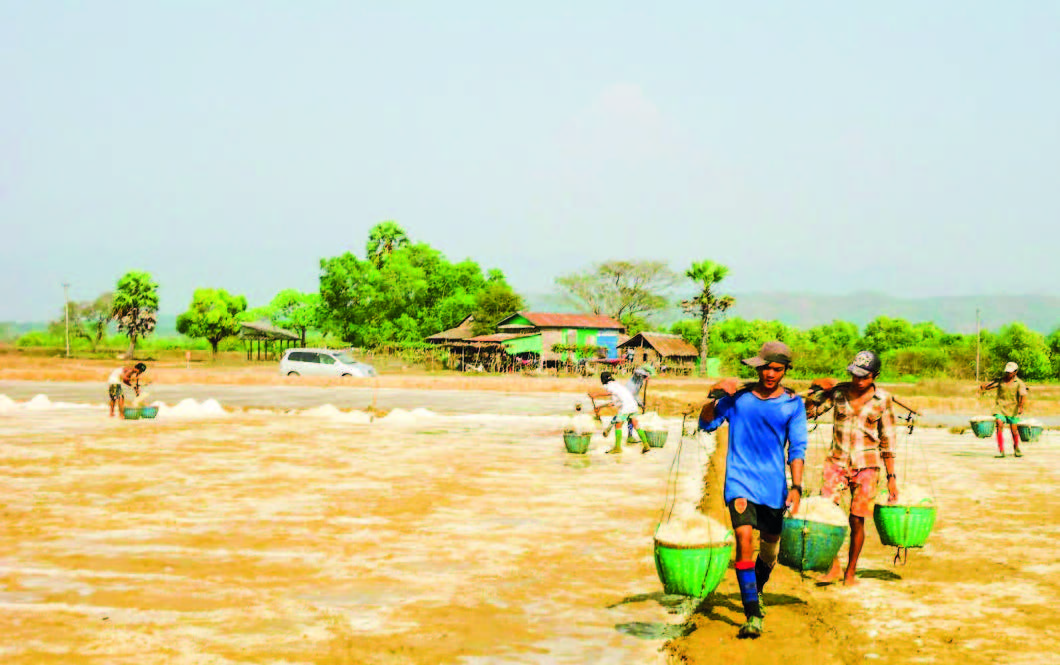Salt Industries of Mon State reported that salt production farms in the state ceased operations to avoid rain damage. Rain can be forecasted at least 15 days in advance based on weather information, allowing salt farmers to close their farms and secure their equipment in time.
Twenty years ago, salt farmers experienced significant losses due to unexpected rain. Since then, they have been vigilant in following weather forecasts and have practised closing their farms at least 15 days before expected rainfall. Salt farming is a seasonal business, similar to crop cultivation, and depends on favourable weather conditions, fuel prices, and domestic commodity prices.
Salt farm owners reported that the cost of raw salt production this year is higher than in previous years due to increased labour and fuel costs, as well as general commodity prices. As a result, salt farmers need to earn at least K200 per viss to make a profit or at least cover their expenses.
Salt is currently harvested and stored in warehouses in good condition. In Myanmar, salt production primarily occurs in the Ayeyawady Region, Rakhine State, and Mon State. Ayeyawady Region accounts for 66 per cent of the country’s total salt production, while Rakhine State and Mon State share the remaining 34 per cent. Myanmar ranks 51st among the 93 countries in the world that produce salt. — TWA/TMT


